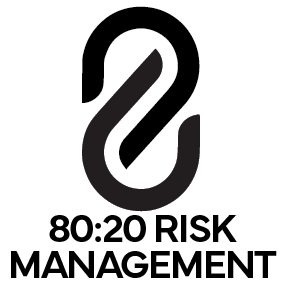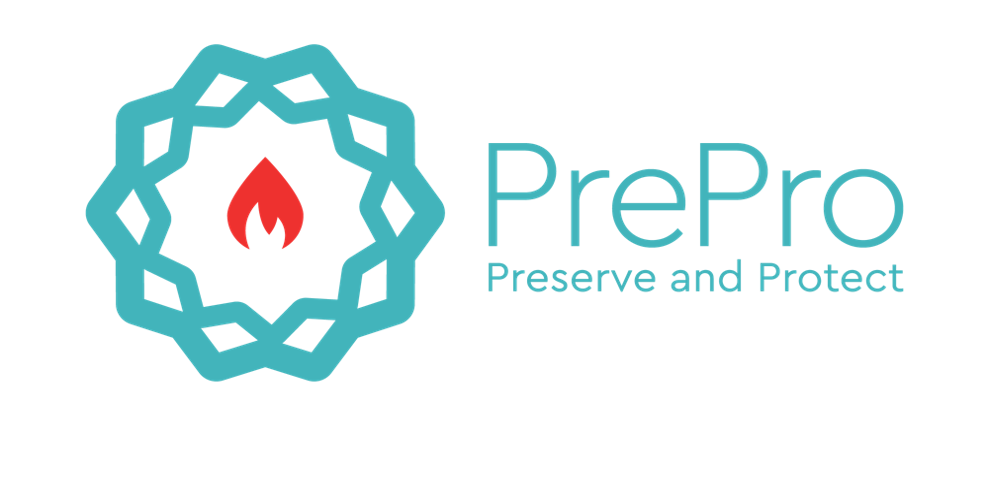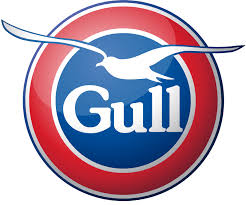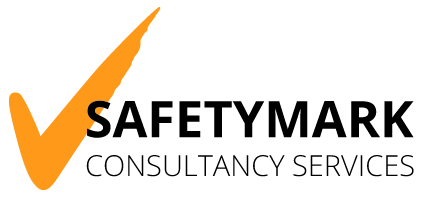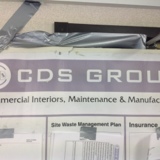Information
-
Audit Title
- Gear Construction A40
- Gear Construction Riverbank
- Gear Construction Hercules House
- Mtd Contractors Nobu
- Nine Heathrow ventures
- Royal London House
- Rapeed Design
- MRE Contractors
- Gear Construction Riverbank 2
-
Client
- Gear Construction
- Mtd Contractors
- Nine Heathrow Ventures
- Rapeed Design
- Nine Heathrow Ventures
- SGP Contractors
- MRE Contractors
-
Company Personnel
- Nick Arnold
- Bill Hinsley
- Hercules Manager
- S.Balamurali
- MTD Contractors
- Rapeed Design
- MRE Contractors
- Riverbank communal area manager
-
Conducted on
-
Address
-
Prepared by
Welfare
-
Have suitable and sufficient numbers of toilets been provided and are they kept clean?
-
Are there clean washbasins, warm water, soap and towels?
-
Is suitable clothing provided for those who have to work in wet, dirty or otherwise adverse conditions?
-
Are there facilities for changing, drying and storing clothes?
-
Is drinking water provided?
-
Is there a site hut or other accommodation where workers can sit, make tea and prepare food?
-
Is there adequate first aid provision?
-
Are welfare facilities easily and safely accessible to all who need to use them?
Protecting The Public
-
Are the public fenced off or otherwise protected from the work?
-
Once visitors are on site are they either escorted or unable to access areas of site where they are at risk?
-
Is the perimeter fencing secure and undamaged?
General
-
Have emergency procedures been developed, e.g. evacuating the site in case of fire or rescue from a confined space?
-
Are people on site aware of the procedures and rules? And are they followed and adhered to?
-
Is there a means of raising the alarm and does it work?
-
Are there adequate escape routes and are these kept clear?
Safe Places Of Work
-
Can everyone on the project reach their place of work safely, e.g. are roads, gangways, passageways, passenger hoists, staircases, ladders and scaffolds in good condition and clear at all times?
-
Are the working structures stable, adequately braced and not overloaded?
-
Is the work area and interior adequately lit? Is there sufficient additional lighting available for when work is carried out in dark areas of the building?
-
Are there proper arrangements for collecting and disposing of waste materials, and are they regular enough?
-
Are all holes and openings securely guard railed, or provided with an equivalent standard edge protection or provided with fixed, clearly marked covers to prevent falls?
-
Are all working areas and walkways level and free from trip hazards, obstructions such as stored materials or hanging cables?
-
Are there guard rails or equivalent protection to stop falls from open edges on scaffolds, mobile elevating platforms, buildings, gangways, excavations, etc?
-
Is the site tidy and are materials and stored safely out of the escape routes?
Scaffolding
-
Are all of our scaffolds and work platforms erected, altered and dismantled by competent persons?
-
Do we have handover certificates for all work platforms and scaffolds?
-
Is there safe access method (e.g. ladder) to the scaffold platform?
-
Have all uprights been provided with base plates (and, where necessary, timber sole plates) or prevented in some other way from slipping or sinking?
-
Are all of the uprights, ledgers, braces and struts in position?
-
Is the scaffold secured to the building or structure in enough places to prevent collapse?
-
Are there adequate guardrails and toe boards or an equivalent standard of protection at every edge from which a person could fall 2 m or more?
-
Are intermediate guardrails fitted?
-
Where guard rails and toe boards or similar are used: <br>Are the toe boards at least 150 mm in height? <br>Is the upper guardrail positioned at a height of at least 910 mm above the work area? <br>Are additional precautions, e.g. intermediate guard rails or brick guards in place to ensure that there is no unprotected gap of more than 470 mm between the toe board and upper guard rail? <br>Are the working platforms fully boarded and are the boards arranged to avoid tipping or tripping? <br>Are there effective barriers or warning notices in place to stop people using an incomplete scaffold, e.g. where working platforms are not fully boarded? <br>Has the scaffold been designed and constructed to cope with the materials stored on it and are these distributed evenly? <br>Does a competent person inspect the scaffold regularly, e.g. at least once a week; always after it has been substantially altered, damaged and following extreme weather? <br>Are the results of inspections recorded in our company records or site diary?
Ladders
-
Are ladders we have supplied the right means of access for this project or job?
-
Are all of the ladders used by us and our sub-contractors in good condition?
-
Have we secured them to prevent them slipping sideways or outwards?
-
Do our ladders sections raise a sufficient height above their landing place? If not, are there other hand-holds available?
-
Are our ladders positioned so that users don't have to over-stretch or climb over obstacles to work?
-
Does the ladder being inspected rest against a solid surface and not on fragile or insecure materials?
Roof work
-
Are there enough barriers and is there other edge protection to stop people or materials falling from roofs?
-
Are harnesses available for the workforce if required?
-
Do the roof battens provide safe hand and foot holds? If not, are crawling ladders or boards provided and used?
-
During industrial roofing, are precautions taken to stop people falling from the leading edge of the roof or from fragile or partially fixed sheets, which could give way?
-
Are suitable barriers, guardrails or covers, etc provided where people pass or work near fragile material such as asbestos cement sheets and rooflights?
-
Are crawling boards provided where work on fragile materials cannot be avoided?
-
Are people excluded from the area below the roof work? If this is not possible, have additional precautions been taken to stop debris falling onto them?
Excuvations
-
Is an adequate supply of timber, trench sheets, props or other supporting material made available before excavation work begins?
-
Is this material strong enough to support the sides?
-
Is a safe method used for putting in the support, i.e. one that does not rely on people working within an unsupported trench?
-
If the sides of the excavation are sloped back or battered, is the angle of batter sufficient to prevent collapse?
-
Is there safe access to the excavation, e.g. by a sufficiently long, secured ladder?
-
Are there guardrails or other equivalent protection to stop people falling in?
-
Are properly secured stop blocks provided to prevent tipping vehicles falling in?
-
Does the excavation affect the stability of neighbouring structures?
-
Are materials, spoil or plant stored away from the edge of the excavation in order to reduce the likelihood of a collapse of the side?
-
Is the excavation inspected by a competent person at the start of every shift; and after any accidental collapse or event likely to have affected its stability?
Manual Handling
-
Has the risk of manual handling injuries been assessed?
-
Are hoists, telehandlers, wheel-barrows and other plant or equipment used so that manual lifting and handling of heavy objects is kept to a minimum?
-
Are materials such as cement ordered in 25 kg bags?
-
Can our team avoid the handling of heavy blocks?
Hoists
-
Is our hoist protected by a substantial enclosure to prevent someone from being struck by any moving part of the hoist or falling down the hoist way?
-
Are gates provided at all landings, including ground level?
-
Are the gates kept shut except when the platform is at the landing?
-
Are the controls arranged so that the hoist can be operated from one position only?
-
Is the hoist operators or sub-contractors trained and competent?
-
Is the hoist's safe working load clearly marked?
-
If the hoist is for materials only, is there a warning notice on the platform or cage to stop people riding on it?
-
Is the hoist inspected weekly, and thoroughly examined every six months by a competent person?
-
Are the results of inspection recorded?
Powered Access Equipment
-
Has the equipment been erected by a competent person?
-
Is fixed equipment, e.g. mast climbers, rigidly connected to the structure against which it is operating?
-
Does our working platform have adequate guard rails and toe boards or other barriers to prevent people and materials falling off?
-
Have precautions been taken to prevent people being struck by the moving platform, projections from the building or falling materials, e.g. barrier or fence around the base?
-
Are our operators or sub contractors trained and competent to use this equipment?
-
Is the power supply isolated and the equipment secured at the end of the working day?
Cranes And lifting Equipment
-
Is the mobile or static crane working on a firm level base?
-
Are the safe working loads and corresponding radii known and considered before any lifting begins?
-
If the crane has a capacity of more than 1 tonne, does it have an automatic safe load indicator that is maintained and inspected weekly?
-
Are all operators trained and competent?
-
Has the banksman/slinger/signaller been trained to give signals and to attach loads correctly?
-
Do the operator and signaller / banksman find out the weight and centre of gravity of the load before trying to lift it?
-
Are cranes inspected weekly, and thoroughly examined every 14 months by a competent person?
-
Are the results of inspections and examinations recorded?
-
Does the crane have a current test certificate?
Plant And Machinery
-
Is the right plant and machinery being used for the job? Have the entire project team agreed on this point?
-
Are all-dangerous parts guarded, e.g. exposed gears, chain drives, projecting engine shafts?
-
Are guards secured and in good repair?
-
Is the machinery maintained in good repair and are all safety devices operating correctly?
-
Are all operators trained and competent?
Traffic And Machinery
-
Have separate pedestrian, vehicle access points and routes around the site been provided? If not, are vehicles and pedestrians kept separate wherever possible?
-
Have one-way systems or turning points been provided to minimise the need for reversing?
-
Where vehicles have to reverse, are they controlled by properly trained banksman?
-
Are vehicles maintained; do the steering, handbrake and footbrake work properly? Have drivers received proper training?
-
Are vehicles securely loaded?
-
Are passengers prevented from riding in dangerous positions?
Fire
-
Are there provided proper storage areas for flammable liquids and gases, e.g. LPG and acetylene?
-
Is the quantity of flammable material on site kept to a minimum?
-
Are containers and cylinders returned to these stores at the end of the shift?
-
If liquids are transferred from their original containers are the new containers suitable for flammable materials?
-
Is smoking banned in areas where gases or flammable liquids are stored and used? Are other ignition sources also prohibited?
-
Are our gas cylinders and associated equipment in good condition?
-
When gas cylinders are not in use, are the valves fully closed?
-
Are cylinders stored outside?
-
Are adequate bins or skips provided for storing waste?
-
Is flammable and combustible waste removed regularly?
-
Are the right number and type of fire extinguishers available and accessible?
Hazards Substances
-
Have we considered all harmful materials, e.g. asbestos, lead, solvents, paints etc and have we identified them properly?
-
Have the risks to everyone who might be exposed to these substances been assessed?
-
Have precautions been identified and put in place, e.g. is protective equipment provided and used; are workers and others who are not protected kept away from exposure?
Noise
-
Are breakers and other plant or machinery fitted with silencers?
-
Are barriers erected to reduce the spread of noise?
-
Is work sequenced to minimise the number of people exposed to noise?
-
Are others not involved in the work kept away?
-
Is suitable hearing protection provided and worn in noisy areas?
Protective Clothing
-
Has adequate personal protective equipment, e.g. hard hats, safety boots, gloves, goggles, and dust masks been provided?
-
Is the equipment in good condition and worn by all who need it?
-
Is all equipment of the right kind of PPE for the job being completed?
Electricity
-
Is the supply voltage for tools and equipment the lowest necessary for the job (could battery operated tools and reduced voltage systems, e.g. 110V, or even lower in wet conditions, be used)?
-
Where mains voltage has to be used, are trip devices, e.g. residual current devices (RCDs) provided for all equipment?
-
Are RCDs protected from damage, dust and dampness and checked daily by users?
-
Are cables and leads protected from damage by sheathing, protective enclosures or by positioning away from causes of damage?
-
Are all connections to the system properly made and are suitable plugs used?
-
Is there an appropriate system of user checks, formal visual examinations by site managers and combined inspection and test by competent persons for all tools and equipment?
-
Are scaffolders, roofers etc or cranes or other plant, working near or under overhead lines? Has the electricity supply been turned off, or have other precautions, such as 'goal posts' or taped markers been provided to prevent them contacting the lines?
-
Have underground electricity cables been located (with a cable locator and cable plans), marked, and precautions for safe digging been taken?
Additional Items
-
Any Additional Items Found?








